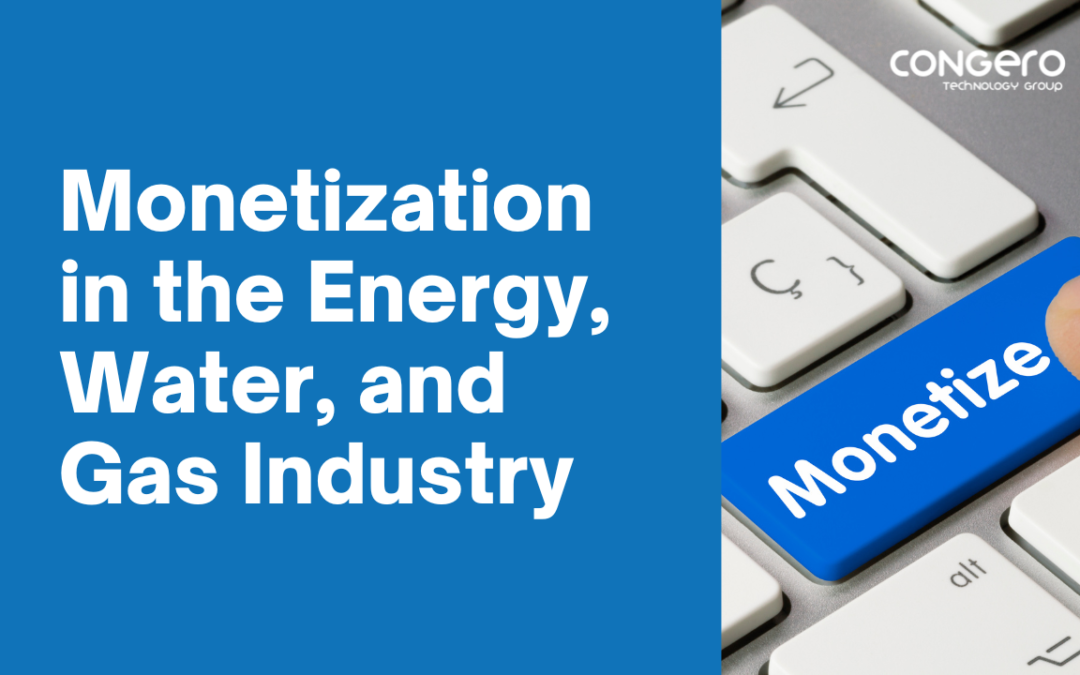Monetization refers to the conversion of a service into revenue in an efficient way. In other words, it’s how a company can obtain economic benefits from delivering a service. It can be inferred that monetization is essential in the success of service providers in companies where measurement and recurring billing is the key, such as energy, water, and gas service providers. All these ideas are the main reason why we have written this article.
Let’s imagine the monetization flow of energy, water, and gas service providers through the following process:
1. It all starts when subscribing to the service, initially a customer will make a request by going to an agency, and then goes through the corresponding feasibility study process.
2. Once the technical feasibility is approved, provisioning proceeds, which is basically the generation of work orders and their execution to generate and execute tasks such as meter installation, connection to supply pipes, etc.
3. Now the customer is ready for Consumption Generation and Rating. Once the service has been provisioned and the necessary approval has been given to start delivering the service, the customer will begin to generate consumption, which will be metered and notified to the billing and rating platform in order to price the records according to the contract statements, regulatory statements or a combination of both.
4. Finally comes the Billing and Collection processes, where the customer will be billed and then invoice, then the invoice document can be delivered to the customer, in this scenario invoice contains the detail or information of the quantities consumed during the period. After all that, it starts the account receivable and collection management process.
At this point, we consider it is very valuable to focus on item number 3 in the previous list, Consumption Generation and Rating, this is the heart of the monetization of energy, water, and gas service provider companies. As we have previously mentioned, monetizing means converting the delivery of a service into a revenue efficient way, to this definition we would like to add: delivering value to the customer as well as to the business. This is precisely why many companies in these sectors are seeking to implement monetization models beyond the traditional flat rate pricing. In today’s world, creativity allows us to find consumption models for service providers based on the following concepts:
· Value-adjusted rates, which reflect the real value of services to the customer. It consists of implementing rates that vary according to the time of day or the time of year. For example, customers who use more energy during peak hours could pay a higher rate than those who use it during lower demand hours, the same for water and gas.
· Subscription rates. These rates offer access to additional services or discounts on existing services in exchange for a monthly fee. In the case of energy, water, and gas companies, they could offer customers the possibility of obtaining discounts on their bills or access to additional services such as technical assistance or energy-saving programs. Likewise, complementary services such as home insurance for a fixed monthly fee can be added to the monthly bill for these services, promoting commercial alliances adding value to their subscribers.
· Tiered rates, the more you consume, the less you pay, or vice versa. The concept of more consumption, more payment is used to promote efficient rates on sectors like energy and water consumption.
· Efficient rates, these rates offer incentives to customers who use services more efficiently. For example, they could offer discounts to customers who reduce their consumption or implement energy-efficient measures in their homes or businesses.
Achieving a rating model oriented towards effective monetization of services through the implementation of creative rates like the ones mentioned above implies having an integration of technological systems designed for this purpose, such as EMBRIX (Embrix.com) a revenue generation and management monetization solution.
In line with the above, a company pursuing monetization models must have an architecture oriented for this purpose, with at least these components:.
- A CRM (Customer Relationship Management) to receive orders and manage customer requests.
- An order orchestration system, sometimes these flows, are implemented in a reduced form as part of the functionality of a CRM or monetization system. Their intention is to orchestrate the flow of an order connecting the billing layer, the CRM and the provisioning layer. Basically connecting business to technical.
- A monetization system, which will be responsible for applying all the simple and complex pricing models the business is willing to implement, including those described previously in this article, functions that an ERP cannot fulfill.
- An ERP (Enterprise Resource Planning) which receives all the invoiced information from the monetizer in order to initiate all accounting management.
At this point, it is necessary to delve a little further into the difference between an ERP and a monetization and revenue generation system. One of the main differences between an ERP system and a monetizer is that the former focuses primarily on the internal management of a company’s operations, while the latter focuses on maximizing revenue through the implementation of different monetization strategies.
We consider delving into the concept of monetization a crucial aspect for maximizing revenues in the energy, water, and gas service provider industries. While an ERP system is useful for company internal management, a monetizer is a more complete and effective solution for implementing different customized monetization strategies tailored to the industry needs and preferences in order to add value to both customers and business. The implementation of the strategies outlined in this article (adjusted value rates, subscription rates, service packages, and rates for efficient use) can help these industries add value to their services and improve the customer experience, which in turn can generate loyalty and greater long-term revenue.
If you found this article interesting and would like to learn more about the topic, please contact us here.

